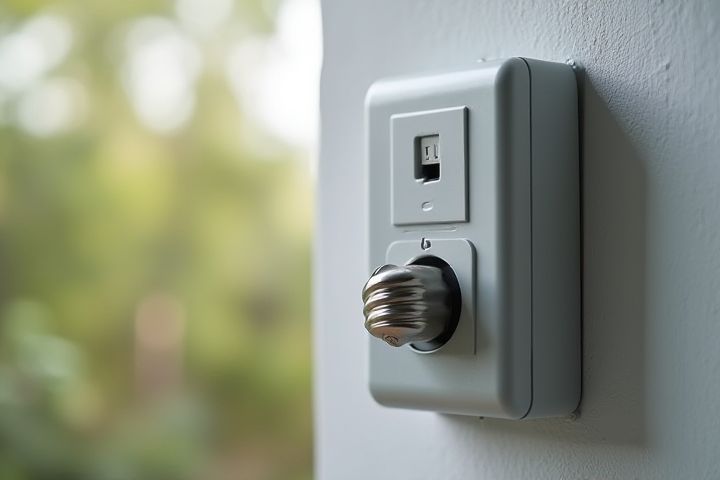
To reduce your house electric bill, start by investing in energy-efficient appliances, which consume less power than their traditional counterparts. You can also consider installing a smart thermostat, allowing you to optimize heating and cooling based on your schedule, thus saving significant energy. Switching to LED lighting can dramatically decrease your lighting costs, as they use up to 75% less energy than incandescent bulbs. Additionally, inspecting and sealing any drafts in windows and doors can prevent heat loss, maximizing your HVAC system's efficiency. Finally, utilizing power strips for electronics can help eliminate "phantom" energy usage from devices in standby mode.
How To Reduce House Electric Bill
Use energy-efficient appliances
Investing in energy-efficient appliances can significantly lower your house electric bill. Look for appliances with the ENERGY STAR label, which indicates they meet strict efficiency guidelines set by the U.S. Environmental Protection Agency. Modern energy-efficient models, such as refrigerators, washing machines, and HVAC systems, use less electricity while delivering optimal performance. By upgrading to these appliances, you can not only reduce energy consumption but also save money over time on your utility bills.
Install LED lighting
Installing LED lighting significantly reduces your household electric bill by using up to 80% less energy compared to traditional incandescent bulbs. These energy-efficient lights have a longer lifespan, lasting up to 25,000 hours, which translates to fewer replacements and lower maintenance costs. Moreover, LEDs emit less heat, which can help keep your home cooler, reducing air conditioning usage during warmer months. By making the switch to LED lighting, you not only save on electricity costs but also contribute to a more sustainable environment.
Utilize smart thermostats
Utilizing smart thermostats can significantly reduce your house electric bill by optimizing heating and cooling based on your daily schedule. These devices learn your preferences and adjust temperatures automatically, potentially leading to energy savings of 10% to 30%. By programming your smart thermostat to lower the temperature during the night or when you're away, you can avoid unnecessary energy consumption. Furthermore, real-time energy usage reports provided by many smart thermostats empower you to identify peak usage times and adjust your habits accordingly.
Seal windows and doors
Sealing windows and doors is crucial for reducing your electricity bill, as it minimizes air leaks that lead to energy waste. Utilize weather stripping or caulk to fill gaps and cracks, ensuring that your home maintains a consistent temperature, thereby reducing reliance on heating and cooling systems. Inspect your windows for drafts and consider adding storm windows for improved insulation efficiency. By investing time and resources into sealing these openings, you not only enhance comfort but also significantly lower monthly energy costs.
Insulate properly
Proper insulation can significantly reduce your electricity bill by minimizing heat loss in winter and heat gain in summer. According to the U.S. Department of Energy, effective insulation can save you up to 20% on heating and cooling costs. Insulating your attic, walls, and floors with materials such as fiberglass, foam board, or spray foam can create a thermal barrier, ensuring your home remains comfortable year-round. Consider using R-values, which indicate insulation effectiveness, to select the best products for your climate and achieve optimal energy efficiency.
Use power strips
Using power strips can significantly reduce your electric bill by minimizing phantom loads, which account for approximately 10% of your overall energy consumption. By connecting multiple devices to a single power strip, you can easily turn off all devices with one switch when they're not in use, preventing them from drawing power. Consider investing in smart power strips that automatically cut power to idle devices, ensuring that you're only using energy when necessary. Over time, these small changes can lead to noticeable savings on your monthly energy costs, making it easier for you to manage your household budget.
Unplug unused electronics
Unplugging unused electronics can significantly reduce your electric bill, as devices in standby mode can consume up to 10% of your home's energy. For instance, a single TV can waste approximately 20 to 30 watts when not in active use, leading to an unnecessary increase in your monthly expenses. You can easily save about $100 each year by disconnecting electronics such as chargers, gaming consoles, and kitchen appliances when they're not in operation. Consider using a power strip with an on/off switch, making it easier for you to control the power supply to multiple devices at once.
Optimize HVAC settings
To optimize your HVAC settings and reduce your electric bill, set your thermostat to 78degF (26degC) during the summer months and 68degF (20degC) in winter for maximum efficiency. Regular maintenance, such as changing filters every 1-3 months, can improve airflow and reduce energy consumption by up to 15%. Use programmable or smart thermostats to automatically adjust the temperature during peak hours, potentially saving 10-15% on cooling costs. Sealing air leaks and ensuring proper insulation in your home can enhance HVAC performance, leading to further savings on your monthly electric bill.
Install solar panels
Installing solar panels on your property can significantly reduce your electricity bill by harnessing renewable energy. By converting sunlight into electricity, solar panels allow you to generate your own power, which decreases your reliance on the grid. Many utility companies also offer net metering, allowing you to sell excess energy back, further lowering costs. With various incentives and tax credits available, transitioning to solar energy can provide substantial savings in the long term.
Reduce water heater temperature
Lowering your water heater temperature to 120degF can significantly cut your energy bill, as each 10degF reduction can save approximately 3% on energy costs. Most households can maintain comfort at this setting while reducing energy consumption. Insulating your water heater and the first few feet of hot water pipes can further enhance efficiency and prevent heat loss. Regular maintenance, like flushing the tank once a year, also helps in keeping your water heater running efficiently, contributing to savings on your monthly electric bill.
